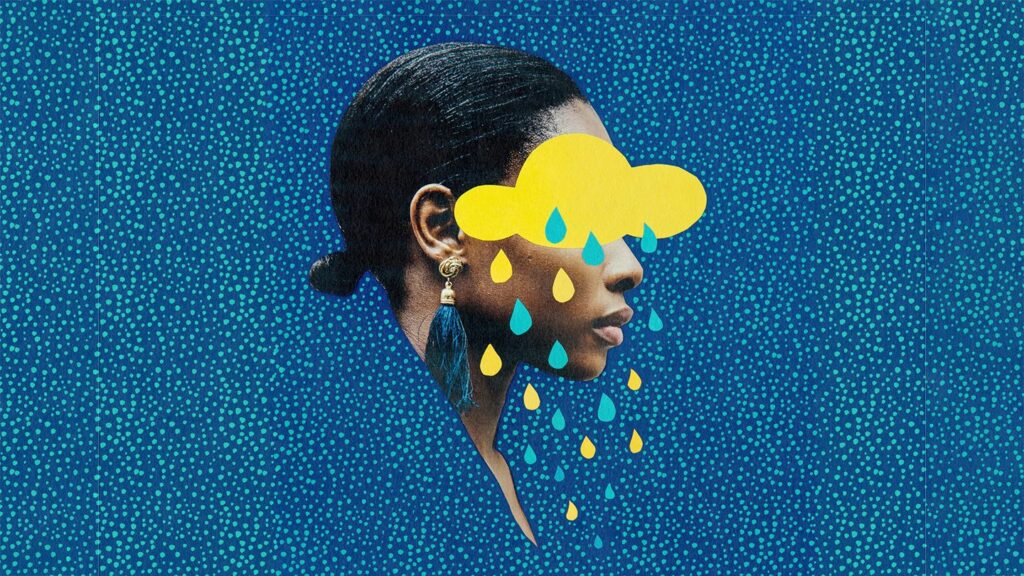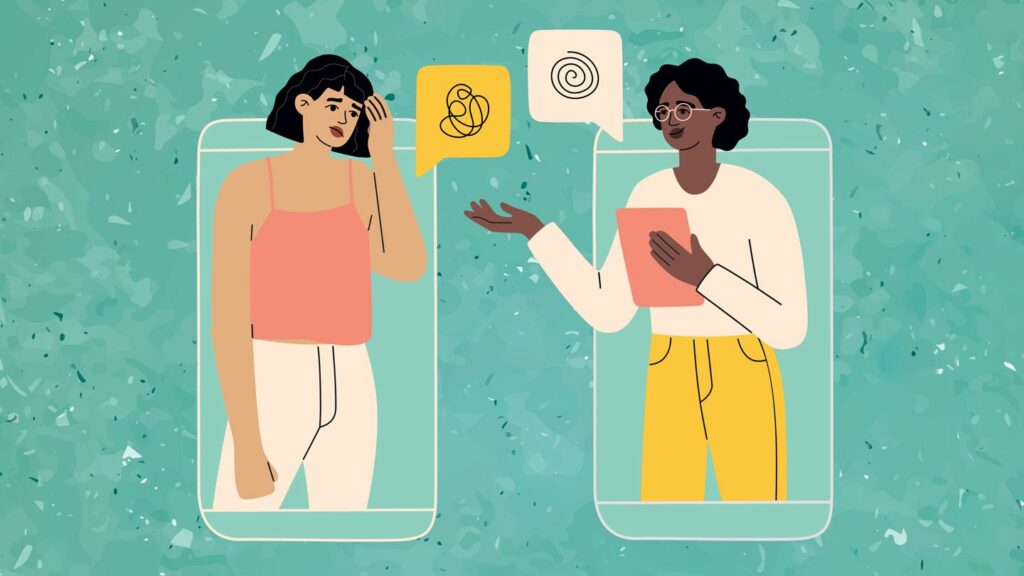Major affective disorder, also known as major depressive disorder or MAD, is an illness that causes severe mood swings and affects a person’s ability to function normally. Interestingly, the symptoms of MAD are not just limited to people who experience depression – even people who don’t have any major blues can be susceptible to this condition if they have a family history of it.
Contents
What is Major Affective Disorder?

The major affective disorder is a serious mental health condition that includes symptoms such as intense sadness, hopelessness, and refusal to engage in activities that used to be enjoyable. People with the major affective disorder may also have problems with sleep, food intake, and weight.
This type of disorder is also known as major depressive disorder, severe depression, or unipolar depression. Sometimes, it is called dysthymia. There may be many different causes for a person to develop a major affective disorder, but it is usually caused by a combination of genetic and environmental factors.
Sometimes there may be a physical manifestation of the major affective disorder, such as weight gain or changes in sleep habits.
The Different Types of Major Affective Disorder

Major depressive disorder (MAD) is a serious mental illness that affects about 20 percent of the American population. MAD is characterized by persistent, low mood and loss of interest or pleasure in activities that were once enjoyed.
There are three main types of MAD:
Unipolar Disorder
Unipolar disorder is the most common type of MAD. People with unipolar disorder have one major depressive episode, which is a period of severe sadness or lack of interest in activities that used to be enjoyable.
Bipolar I Disorder
Bipolar I disorder is a serious mental illness characterized by alternating periods of high (manic) and low (depressive) moods. People with bipolar I disorder experience at least one fully manic episode, which is a period of abnormally elevated mood, energy, activity, and self-esteem.
Bipolar II Disorder
Bipolar II disorder is a serious mental illness that is different from bipolar I disorder. People with bipolar II disorder experience two or more episodes of mania or hypomania within 12 months. Mania is an abnormally elevated mood, while hypomania is a less severe form of mania.
What Are The Symptoms of Major Affective Disorder?

People with MAD experience an extreme decrease in mood or an episode of abnormally elevated mood, which can last for weeks, months, or even years.
There are many other signs of MAD, including:
Severe changes in appetite and weight
This is one of the most common symptoms of MAD. People with MAD commonly lose a large amount of weight, or they may become very thin even when they are not eating very much. They may also have trouble gaining weight or keeping weight off.
Extreme changes in sleep patterns
People with MAD often have problems sleeping and may have difficulties falling asleep, staying asleep, or having a good night’s sleep. They may also have problems waking up in the morning.
Severe changes in thoughts and behavior
People with MAD often lose interest in things that used to be important to them, such as work, friends, or hobbies. They may also experience a decreased need for social interaction. People with MAD may keep thinking the same negative thoughts over and over again, or they may start doing harmful things (such as drinking alcohol excessively) because they feel hopeless and helpless.
Changes in hair and skin texture
People with MAD often experience changes in their hair and skin, such as increased shedding of hair, thicker hair that is harder to manage, or changes in the color of their hair or skin.
Changes in energy level or activity levels
Also common is a dramatic change in energy level or activity levels. People with MAD may become extremely tired or restless, or they may not want to do anything at all.
Anxiety, depression, and suicidal thoughts or actions
These thoughts are common in people with MAD, and they may feel especially stressed or anxious when their mood swings are happening. They may also experience feelings of hopelessness and suicidal thoughts.
Major Causes of Major Affective Disorder

Major causes of the major affective disorder can be broken down into two categories: environmental, and social.
Environmental Factors
One important environmental factor is exposure to stressors. People with MAD are more likely to experience major life stressors, such as financial problems or interpersonal conflict than people without MAD. Exposure to stressors can lead to increased levels of cortisol, which can promote the development of MAD. Other environmental factors that have been linked with the development of MAD include unhealthy diets, lack of exercise, and excessive use of alcohol and drugs.
Another environmental Factor is the presence of a family history of MAD. If a person inherits a gene from one of his or her parents that promotes the development of MAD, the person is more likely to develop the condition.
Trauma and abuse can also be a factor in the development of MAD. Trauma and abuse can cause physical and psychological injuries, which can lead to changes in the way the brain works. These changes can increase the risk of developing MAD.
Social Factors
Major social factors that are major contributors to the development of Major Affective Disorder (MAD) include:
Lack of Support from Close Friends and Family
One of the main social factors is the lack of support from close friends and family. This can lead to a person feeling isolated and unsupported, which can lead to feelings of anxiety and depression.
Lack of Social Interaction
Another social factor that is a major contributor to the development of MAD is a lack of social interaction. This can be due to several reasons, including a person’s shyness or social anxiety, or because they don’t have any friends nearby.
Another major social factor that is a major contributor to the development of MAD is loneliness. This can occur for several reasons, including being single, having few friends, or moving away from friends and family.
Countless Stressors in Life, especially at Work and at Home
There are many stressors in life, especially at work and at home. These can lead to feelings of anxiety and depression, which can further contribute to the development of MAD.
Poor Relationship Quality with Significant Others
Sometimes, poor relationship quality can be the cause of feelings of anxiety and depression, which can in turn lead to the development of MAD. This can occur for several reasons, including disagreements about important issues, communication problems, or emotional abuse.
How Is Major Affective Disorder Diagnosed?
There is no one diagnostic criterion for the major affective disorder (MAD), and the diagnosis is made based on a review of the person’s history and symptoms.
The DSM-5 specifies six distinct features that must be present for a person to meet the criteria for MAD:
1) experiencing at least five different major depressive episodes, including at least two that are clinically significant;
2) having been diagnosed with another mental disorder, such as bipolar disorder, schizophrenia, or a mood disorder not specified in DSM-5, that either predate or coexists with MAD;
3) significantly diminished functioning in at least three areas of life, as measured by scores on standardized tests such as the GDS or YMCA Loneliness Scale;
Some features are more specific to men than women, while others are more specific to women than men. For example, the presence of hallucinations or delusions may be more common in men with MAD, while women with MAD are more likely to have an episode characterized by excessive crying.
The diagnosis of this disorder can be through a clinical evaluation by a psychiatrist or a self-report questionnaire. These are such as the Structured Clinical Interview for DSM-5 (SCID-5).
Some tests that can be used to assess the person’s functioning include the Hamilton Rating Scale for Depression (HAM-D) and the Young Mania Rating Scale (YMRS). These tests also can be used to track the person’s symptoms over time.
Treatment Options for Major Affective Disorder

Major depressive disorder (MAD) is one of the most common psychiatric disorders and is characterized by an episode of major depressive symptoms that lasts at least two weeks. MAD is a serious condition and can lead to problems in daily life, such as decreased concentration, energy levels, sleep difficulties, and weight gain. In many cases, MAD involves changes in mood, thoughts, and behaviors.
There is no one-size-fits-all approach to treating MAD, but various treatments are available that can be effective for different people. Some people may find that medication is the best option for them. Other people may prefer psychotherapy or self-help interventions. Many people find that a combination of different treatments works best for them.
Treatment options for MAD include:
Medications
Medications are an important part of treatment for MAD and can be effective in relieving symptoms. There are several types of medications available for MAD, including antidepressants (such as SSRIs), antipsychotics (such as dopamine antagonists), mood stabilizers (such as lithium), and anticonvulsants (such as valproate). It is important to talk with your doctor about which medication is best for you.
These medications are also available in combination with one another. For example, some people take an SSRI and a mood stabilizer together to help keep their mood stable.
Psychotherapy
Psychotherapy is a type of treatment that involves meeting with a therapist to talk about your symptoms and experiences. Also, Psychotherapy can help treat MAD and can improve your overall well-being. There are many types of psychotherapy available, including cognitive-behavioral therapy (CBT), interpersonal therapy (IPT), and psychoanalysis. Some of these therapies are tailored to specific types of patients (for example, CBT is often used in people with MAD who also have co-occurring anxiety disorders).
CBT is one of the most common types of psychotherapy and is based on the theory that psychological problems are caused by problematic thoughts and behaviors. CBT interventions aim to change these thoughts and behaviors. IP is a type of therapy that focuses on helping patients regulate their emotions. IPT helps patients understand and manage their emotions in healthy ways.
Self-Help Interventions
Self-help interventions can help treat MAD. These interventions involve reading, talking, or doing exercises to help improve your mood. Also, Some self-help interventions are specifically designed for people with MAD, such as mindfulness-based cognitive therapy (MBCT). MBCT is a type of intervention that helps people learn how to focus on their thoughts and feelings without getting lost in them.
These self-help strategies are often effective in the short-term treatment of MAD. However, they cannot replace clinical treatment from a doctor or therapist.
Support Groups
Support groups are an important part of treatment for MAD. Some Support groups provide people with support and resources to help them cope with their symptoms. Groups can be structured or unstructured, but they usually include group discussions, shared experiences, and support from other members. Group therapy can be very effective in treating MAD and can improve symptoms over time. There are many types of support groups available, including self-help and support groups for people with other mental illnesses.
Social Activities
Social activities can help improve your mood. These Social activities can help you to connect with others and build social networks that can support your well-being. Social activities can also provide you with opportunities to release stress and feel pleasure.
It is important to talk with your doctor about which social activities are safe for you to participate in. Some activities, such as hiking or skiing, may be too strenuous for people with MAD.
Conclusion
Major affective disorder, also known as major depressive disorder or MAD, is a serious mental health condition that affects around one in every ten Americans. It’s characterized by recurrent episodes of depression, which can be severe and last for many weeks or months. The cause of MAD is unknown but some things may increase your risk of developing the condition, including being female, having a family history of depression, being overweight or obese, and having high blood pressure. If you’re concerned that you might have MAD, talk to your doctor about what you should do next.
Hope this article was of help to you! If you are suffering from mental health disorders, you may seek help from Therapy Mantra. We have a team of highly trained and experienced therapists who can provide you with the tools and skills necessary for overcoming mental health disorders. Contact us today to schedule an online therapy or download our free Android or iOS app for more information.


